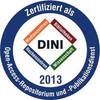Preview |
PDF, English
Download (6MB) | Terms of use |
Abstract
In 2023, an estimated 263 million malaria cases and 597,000 deaths occurred across 83 countries, with Plasmodium falciparum being the deadliest malaria parasite (World Health Organization, 2024). A key driver of Plasmodium falciparum virulence is cytoadhesion, mediated by antigens such as PfEMP1, presented on knobs formed on infected red blood cells (iRBCs). These knobs depend on the knobassociated histidine-rich protein (KAHRP, PfIT_020006800), exported alongside other parasite proteins that remodel iRBCs. This study focuses on two major virulence factors: knob assembly and protein export. Using alanine scanning, I identified the β-sheet structured region of KAHRP (amino acids 136 to 190) as essential for knob formation, with alanine substitutions disrupting knob assembly and resulting in a knobless phenotype. In contrast, mutations in the histidine-rich region (HRR, amino acids 60 to 116) did not affect knob density or shape, and lipid-binding assays confirmed no interaction between HRR and common iRBC lipids, even in the presence of Zn²⁺. Although largely unstructured, the β-sheet core of KAHRP is crucial for knob formation and structural integrity. To investigate protein export, I employed stevor-miniTurbo biotin ligase fusion proteins with wild-type or altered PEXEL motifs to arrest export at distinct stages: ER (RLWAQ construct stevor1-8050W), PV (RLLEQ construct stevor1-8051E), or allow normal export (RLLAQ). These constructs identified proteins interacting with the PEXEL motif or PEXEL-exported proteins, elucidating the molecular machinery of the export pathway. Mass spectrometry revealed several novel, potential interaction partners, and Split-GFP assay confirmed the interaction with SEC12, a guanine nucleotide exchange factor (PF3D7_1116400) involved in COPII vesicle transport, suggesting protein trafficking via vesicular transport from ER to Golgi complex – a poorly studied organelle in Plasmodium. Another confirmed interaction partner, a liver-stage antigen 3 (LSA-3, PF3D7_0220000), conferred its localization and function in the PV. This data emphasizes the importance of the Golgi complex as a potential site for post-translational modifications of PEXEL proteins. It further underscores the need to investigate the functional contributions of LSA-3, which has primarily been studied in immune contexts, to export machinery. This study also reveals the importance of β-sheet structured region of KAHRP in knob assembly. These findings provide a foundation for understanding the molecular details of protein export and cytoadhesion, to open avenues for creating therapeutic interventions that disrupt Plasmodium falciparum virulence.
| Document type: | Dissertation |
|---|---|
| Supervisor: | Lanzer, Prof. Dr. rer. nat. Michael |
| Place of Publication: | Heidelberg |
| Date of thesis defense: | 28 April 2025 |
| Date Deposited: | 08 Aug 2025 10:29 |
| Date: | 2025 |
| Faculties / Institutes: | The Faculty of Bio Sciences > Dean's Office of the Faculty of Bio Sciences |
| DDC-classification: | 570 Life sciences |
| Controlled Keywords: | Plasmodium falciparum, CRISPR/Cas-Methode, Rasterelektronenmikroskopie, Massenspektrometrie, Fluoreszenzmikroskopie, Proteintransport, Molekularbiologie |
| Uncontrolled Keywords: | Cytoadhesion |









